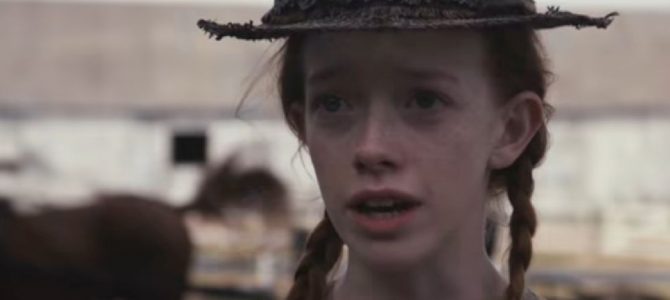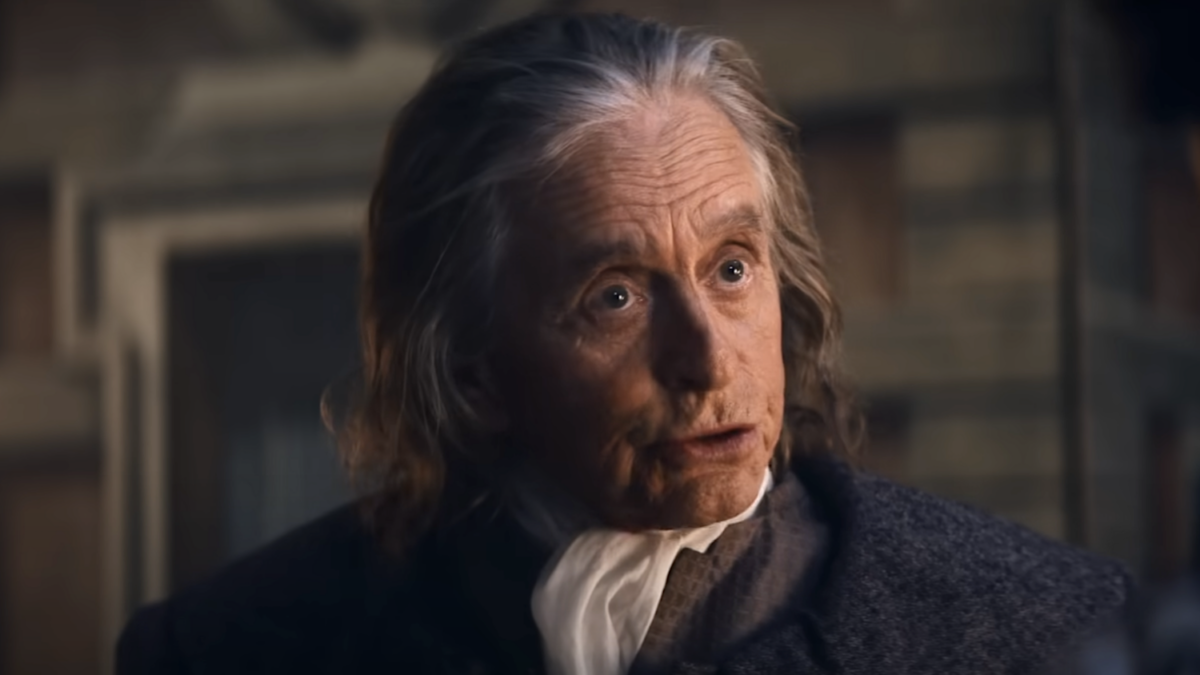
Red-headed Anne Shirley is one of those heroines who has inspired adoration in generations of girls. An orphan, she finds a home when she is sent by mistake to an elderly pair of siblings on Canada’s Prince Edward Island. Once there, she quickly upends the lives of her new guardians while finding a place in the wider community.
Since first appearing in L.M. Montgomery’s 1908 novel “Anne of Green Gables,” the story has been dramatized multiple times. It is, however, the 1985 television show with Megan Follows that has entered the canon as the movie about Anne. That beloved classic is about to be challenged by a new remake: Netflix’s “Anne” is set for release on May 12. You can view the trailer here.
While many fans are eager to re-explore their favorite characters, others have been dismayed by footage from the new series. What we see in a released scene is a startling aberration from the spirit of the original story. In the new show, Anne talks to her friend Diana about sex via a peculiarly unpleasant analogy. She says men have a “pet mouse” in their front pants pocket and that women have babies after they pet the mouse. This conversation is apparently the beginning of an entire plot thread.
At first glance, fan outrage might seem a little silly. We are, after all, talking about a character who experienced abuse and institutionalization before the Cuthbert siblings adopted her. Regardless of whether she lived in the 1890s or the modern world, a real-life Anne would have suffered trauma. Quite likely she would say inappropriate things to her peers.
Even Anne’s creator must have realized this. Just as anyone nowadays who plans to adopt an unknown older child from foster care becomes fair game for everyone else’s second-hand horror stories, so also Marilla Cuthbert is warned in the book that “foundlings” are liable to set fires and poison wells. Yet Anne is not the kind of child who does any of those things. She is not realistic. And that is the whole point.
Anne of Green Gables Is Not Realistic, She’s Aspirational
Montgomery’s Anne is a girl who has responded to suffering by seeking beauty, usually by making up an entire world in her own head to believe that the real one is good and lovely too. Nothing ugly, cruel, or selfish has managed to stick to her. Despite the humorous social debacles she creates when carried away by her imagination, her warm heart and zest for life have a transformative influence on the Cuthberts and others around her.
It is easy for modern adult readers to choke on the original novel and its sequels. So sentimental! So Victorian, in the unabashed celebration of the uplifting influence of a pure-hearted female! Before we reject Anne, though, we would do well to ask ourselves why she has lasted for so long and appealed to so many young girls.
There is a reason children have long been given inspirational, idealized protagonists. When you think about it, is it realistic that Harry Potter is so well-adjusted? That Charlotte, even if she could spell, would care about Wilbur? That Cinderella has such a good work-ethic? There is also a reason it is cruel and perverted to take away those protagonists and replace them with the grit that some adults call reality.
The thing is, children imagine themselves capable of stupendously unlikely deeds. Even once they have outgrown the illusion that they are going to become the best soccer player in the world or, perhaps, a princess, children read books and see themselves among the heroes. In their hearts, most children are sure “I would have slain the monster.” “I would have freed the slaves.” “I would have defied the lions and died for my faith.” This is an excellent thing, because yearning after what is good plays a crucial role in developing the moral imagination that will shape their future lives and choices.
Showing Children Virtuous Role Models Is Good for Them
When I was around 12 years old, I couldn’t see that Anne wasn’t realistic, and my heart was stirred. In a way, she was like one of King Arthur’s knights or a Christian slave girl from “Foxe’s Book of Martyrs.” She was driven by the things that matter most and, in the classic technique storytellers have used for generations, she was written in such a way as to symbolize those things. That, I think, is why, as the series goes on, the author turns her into a beautiful, graceful, admired, virtuous, happy woman.
What Montgomery’s series does well is to portray virtue in such a way as to make many readers desire it. This does not make her work flawless or turn it into a complete literary diet. Children also need tales of heroes and heroines who lack the power to charm everyone around them with winsome speeches. More importantly, kids also need stories that reveal the ugliness of sin and vice. However, no child should be treated with the cruelty that comes into play when adults declare that what is really “real” is the normalization of vice and the enjoyment of titillation.
A child’s outlook on life is under development. Glimpses of perversion can alter the proportions of what she thinks is normal. Just as children cannot legally consent to sexual intercourse with an adult, we should recognize that they have a right to be protected from sexual references that are inappropriate for their developmental level. They have a right to sit down to a story marketed as family-friendly without hearing the characters talking about “mice” in men’s trousers.
This material is inappropriate for children by its very nature, but it is particularly insulting in a story long beloved for its wholesomeness. Why are the purveyors of modern entertainment so consistently drawn to source material they apparently cannot understand? It almost seems as if they intend to destroy the power of old books and old stories to challenge a postmodern worldview by delivering diluted, reimagined versions that function as an inoculation. It is almost as if they want to keep us from recognizing that not all beliefs, values, time periods, and stories are the same as ours, lest we begin to question what we have been taught.
Netflix’s “Anne” has yet to be viewed in the United States. It is faintly possible the sexual conversations will turn out to perform a meaningful function in a moving and effective plotline. In other words, it may be that the producers displayed creativity and thoughtfulness in constructing new story line. If this is so, we might ask them why they did not simply do the more courageous thing and make up a story of their own.









